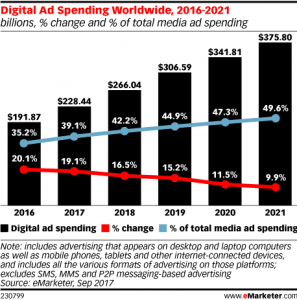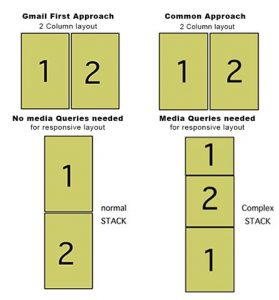The Digital Advertising Upside-Down: What Was Great Is Now Deemed Terrible
by Maarten Albarda, Featured Contributor, March 27, 2017
How quickly the world can change. Last week I wrote about the fact that U.K. advertisers seemed to move a lot more proactively than U.S. advertisers on addressing YouTubegate.
I refer of course to the fact that in the U.K, an ever-larger group of digital advertisers was pulling their budgets from YouTube and Google advertising (not Google search) because it was reported in the press that their ads had been placed with Jihadist and porn content, among other things. This was obviously not what the clients had wanted, and in fact, until the newspaper exposure, claimed they did not even know anything about. When the U.K. arm of the Havas agency network and the whole of the UK government joined that group, U.S. advertisers started to take note, and started pulling ads, too.
That combined U.S./U.K. group has now become so large that industry bellwether and investment adviser Brian Wieser from Pivotal has now downgraded his recommended position on Google from “buy” to “hold.”
But why did it take this long before something was done? The issue of not knowing where your digital ads would show up is several years old. The issue of even legitimate sites being pirated by scammers is long known, too. So why did it take so long for advertisers to address the issue?
Well, as I have said before, for marketers, this really is a case of being caught between a rock and a hard place. The digital marketing ecosystem is of course a very relevant environment for marketing dollars. But with that investment also comes the responsibility of understanding how that ecosystem works, how to analyze and read the data, how to make a distinction between good and bad, smart and dumb, seen or unseen, human or bot, etcetera. That education happened in a lopsided way.
Agencies, marketing tech and the supply side educated themselves as fast as they could. For them, it was a matter of financial growth and/or survival.
For most agencies, media was the most profitable side of their business, but marketing procurement had started to steadily erode that profit stream. Digital media, as it was complex and in constant flux, was poorly understood by marketers, so agencies stepped (and charged!) up.
The supply and middle-men side also stepped up. Supply (that is, content makers) were desperate to cling onto and recoup losses in traditional advertising income and jumped in headfirst.
Marketing tech saw a great opportunity to make money from both the supply and demand side. Sweet!
Marketers, rightly or wrongly, assumed that their agencies had their backs to safeguard their digital dollars.
Over the last 18 months or so, marketers have realized that agencies, first and foremost, had their own shareholders’ backs (just like marketers have as well!). The ANA, WFA, botnet, Facebook measurement and now Google ad placement revelations have opened marketers’ eyes. Consequently, the issue is now front and center in the boardroom.
My hope is that marketers will use this momentum not just to try and fix YouTubegate. Because as damaging as this issue is, it is only one of the issues that require immediate clean up. Fraud, cost of the middle men ecosystem, out-of-date agency contracts, non-transparency, content that leads consumers to use ad blockers: These are all problems critically in need of solutions.
May the force be with you.
MediaPost.com: Search Marketing Daily
(24)
Report Post






